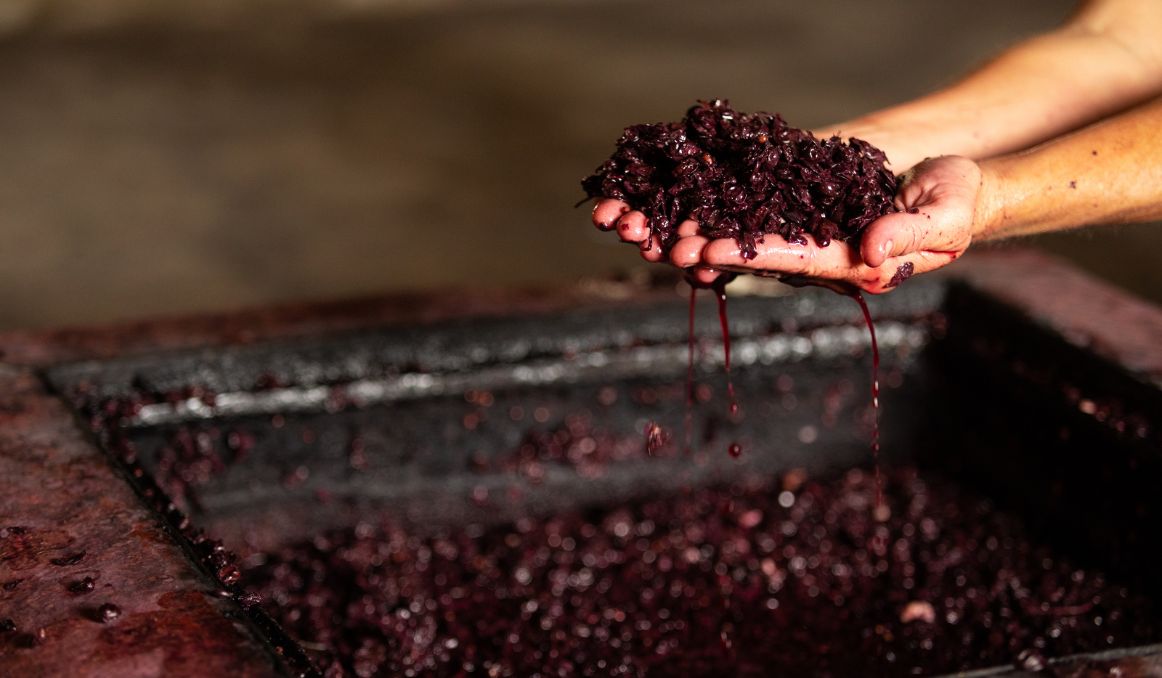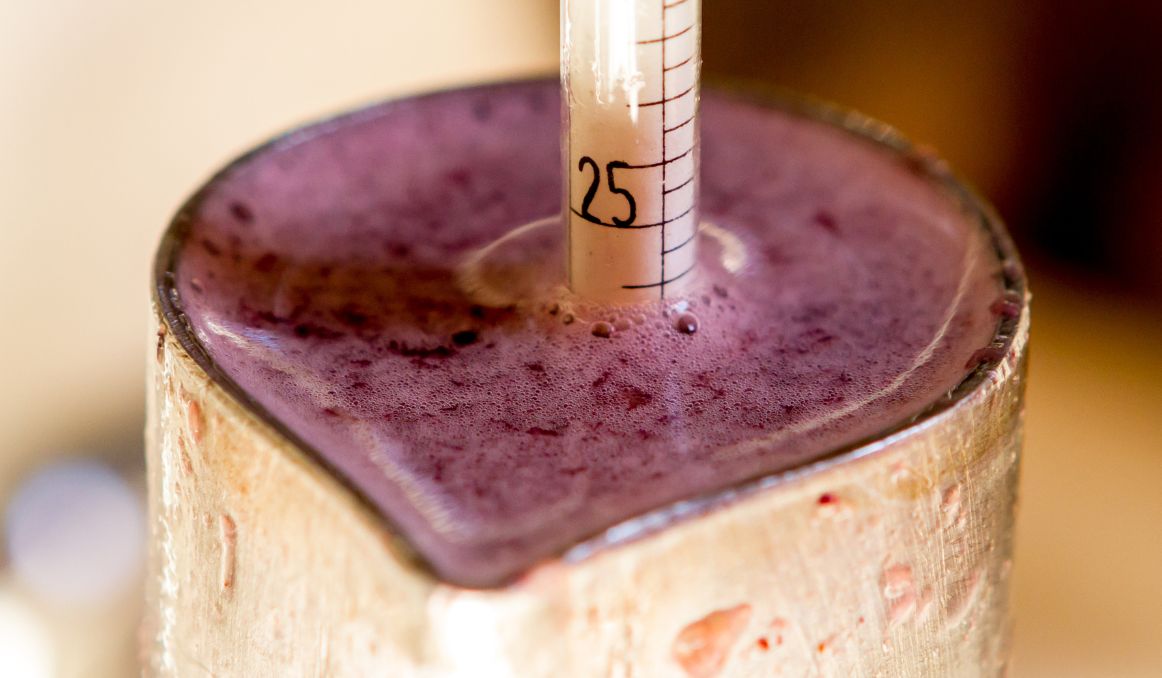How to Measure Sugar Content When Making Wine
In the beginning, the very beginning, no one worried about sugar in wine. The process occurred naturally, and you got what you got.
Today, because we are making wine for others to drink, and as commercial producers, we want a consistent product to deliver to our consumers, figuring out to measure sugar content when making wine can be a critical lesson that leads to tremendous success.
Sugar in Wine

Why does sugar matter in wine?
Well, sugar is the most important element involved in making wine, aside of course from yeast.
And not all grapes are created equal.
When wine was first invented, the process was natural, and naturally sugary. Indeed, archeologists have found that monkeys have been making wine perhaps since the beginning of time. Or of monkeys.
They simply wait for fruit to ripen on the vine, and then they pick it and allow it to ferment. Then, they have drunken weekends during which they will even fight over the remaining alcohol.
Some monkeys even collect sap from palm trees and make their own palm wine!
Wine making, when you have enough sugar, is so simple a monkey can do it.
You pick grapes, crush them, and let the yeast naturally attract to all those good sugars in the crushed grape juice.
Yeast has one job, and one job only – it consumes sugar and converts that sugar to alcohol and carbon dioxide.
But what happens if you don’t have enough sugar?
Sugar and Beer
Beer is a perfect example of what happens when you don’t have enough sugar to make alcohol.
Before brewers figured out to roast, kiln, or malt their grain, they were getting beer with a very low alcohol content, if the yeast even got to work at all.
You see, grain is full of starch, but not sugar. Malting the grain converts the starches in the grain to sugars.
If yeast is attracted to sugar, but comes to find none, or too little, it will stagnate and not ferment at all.
Stuck fermentation is a common problem with beer and wine alike, and one common cause is the sugar content.
English Grapes and Garden Grapes
Again, sugar content was never a problem for wine as the grapes used were typically sugary enough to attract yeast.
But as wine making made its way across the globe, as cultures and civilizations began experimenting with different varieties of grapes to make different wines, and as people began making wine at home, suddenly, sugar was an issue.
Why?
Well, not all grapes are created equal.
English grapes and garden grapes are a great example of what happens when the grapes are not sugary enough.
The British discovered that the grapes that grow well in their colder climates tend to have less sugar, so their must, the juice made from crushed grapes, would stagnate and not ferment.
Thus, they had to add sugar.
How to Measure Sugar Content when Making Wine

Fortunately, over time, vintners developed a way of understanding what was happening in their must and then their wine, and how to measure the sugar content in comparison to the alcohol.
A tool called a hydrometer is used to measure the specific gravity, referred to as SG, of the wine, which tells the wine maker how much sugar is in the wine.
Here’s how it works:
The specific gravity of any liquid tells you how dense the liquid is. In general, a liquid with no sugar has an SG of 1.000. Think of water. Pure water will have an SG of 1.000, also expressed as 1000.
Now, the laws of physics tell us that the more dissolved sugar you have in a liquid, the more dense and syrupy that liquid will get, raising its specific gravity.
A hydrometer will measure the density of the liquid, giving you an SG reading.
When to Use a Hydrometer
You will use a hydrometer for two readings: before you add sugar, to determine if you must, and after you have added sugar but before adding yeast.
Remember, the more sugar you have, the more alcohol you will have.
But you need a hydrometer to tell you how much sugar you have along the way, because you can also run into problems by adding too much sugar.
So while some may advice you to simply add 3 lbs of sugar, or some other flat measurement, you can overwhelm your yeast with too much sugar. The yeast may then fail to ferment at all, or you may end up with a wine that is far too sweet because the yeast stopped fermenting somewhere along the way.
So, with your hydrometer, you will measure you original gravity, or OG, that is the specific gravity reading of the amount of naturally occurring sugar you have in your must before fermentation, and before you add any sugar.
This will let you know how much sugar to add.
It is a good idea to have 3 lbs of sugar on hand, but only add it in small increments, one cup at a time.
After each addition and dissolution, measure your must again until you get to the SG you want. A specific gravity reading will tell you not only how much sugar content you have before fermentation, but it will also let you know how much alcohol to expect after fermentation.
Specific gravity and alcohol content are directly connected.
For a 13% ABV wine, your SG reading should be 1.090.
Your finished reading, after fermentation has finished, should be closer to 1.000. Remember, most if not all of your sugar should be converted to alcohol by the end. Even a sweeter wine has an SG of 1.005.
You can play around with measurements, aiming for higher or lower ABVs and for drier or sweeter wines; just be sure to have that hydrometer on hand, so you will always know where you stand with your wine.
Cheers!
Passionate about the beer and/or wine making process? So are we! If you’re interested in finding out how you can use our technology to control fermentation and monitor your yeast, save work hours and improve the cost-efficiency of your business, drop us a line at [email protected] or check out our product pages:
- Oculyze BB 2.0 (Better Brewing) Yeast Cell Counter App + Hardware
- Oculyze FW (Fermentation Wine) Yeast Cell Counter App + Hardware
Sources:
- https://www.almostoffgrid.com/blogs/almost-off-grid/using-a-hydrometer
- https://www.thenakedscientists.com/forum/index.php?topic=72391.0
- https://brew2bottle.co.uk/pages/specific-gravity-sg-and-alcohol-by-volume


